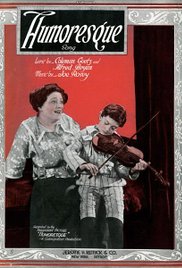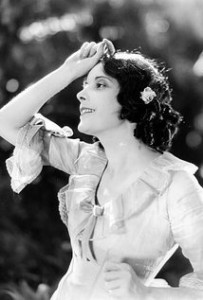Humoresque **** (1920, Alma Rubens, Gaston Glass, Vera Gordon, Dore Davidson) – Classic Movie Review 3535
Director Frank Borzage’s 1920 silent movie is the original version of the Fannie Hurst story in a collection of stories entitled Humoresque: A Laugh on Life with a Tear Behind It (1920) that was turned a wonderful vehicle for Joan Crawford as Helen Wright in 1947, also called Humoresque.
The 1920 movie, just 71 minutes long, is notable as the first film to win the Photoplay Medal of Honor, the precursor to the Academy Award for Best Picture.
This time, Alma Rubens is playing Gina Berg, a rich, unbalanced heroine who comes to the aid of a younger scheming violin player from the slums, Leon Kantor (played by Gaston Glass). Vera Gordon plays the other key role of Mama Kantor, with Dore Davidson as Abraham Kantor and Bobby Connelly as Leon Kantoras a child.
This drama produced by Cosmopolitan Productions, and released by Famous Players-Lasky and Paramount Pictures, It is written byWilliam LeBaron and Frances Marion, the photographer is Gilbert Warrenton the score is by Hugo Riesenfeld and it is produced by William Randolph Hearst.
The film has been restored at the UCLA Film and Television Archive. n 2015, the United States Library of Congress selected it for preservation in the National Film Registry, finding it culturally, historically, or aesthetically significant.
Hurst later turned her story into a play that opened on Broadway on 27 February 1923 at the Vanderbilt Theatre but ran for only 32 performances. Laurette Taylor played the leading role in the production staged by her husband J Hartley Manners.
It is stage star Vera Gordon’s first film, cast by Frank Borzage as the mother at the age of 34, a stereotype character she mined profitably in the movies for many years. Alma Rubens, addicted to alcohol and heroin, died of pneumonia in Los Angeles in 1931, less than a month away from her 34th birthday.
© Derek Winnert 2016 Classic Movie Review 3535
Link to Derek Winnert’s home page for more reviews: http://derekwinnert.com/






